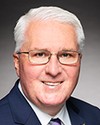Thank you. I've timed my speaking to less than five minutes.
I'm a registered nurse myself, and I'm here representing the CNA, the professional association for close to 140,000 nurses in Canada. I'm pleased to speak today about the measures related to nurse practitioners in Bill C-44. The measures are under part 4, division 11, which focuses on support for families through benefits and leaves in both the Employment Insurance Act and the Canada Labour Code. As for part 1, we are pleased that the Income Tax Act now includes nurse practitioners, NPs, under the list of health care providers who can certify eligibility for disability tax credits. This measure was effective on budget day.
As our president noted on budget day, these changes are long-awaited breakthroughs for patients and nurse practitioners, and we hope they set the precedent for similar modernization of other related legislation. We're thankful that the Minister of Finance included these measures in Bill C-44. Along with the Canadian Association of Advanced Practice Nurses, we encourage members of the committee to accept the amendments that have been proposed for both the Employment Insurance Act and the Canada Labour Code. The amendments formally acknowledge nurse practitioners and enable them to fulfill their important role as primary care providers, particularly for Canadians who live in rural and remote locations in Canada.
Members of the committee are also aware that the Standing Senate Committee on Social Affairs, Science and Technology will be discussing a pre-study on division 11 of the bill, and we encourage them to support these amendments as well.
In order for us to have a sustainable health care system where services are accessible to all Canadians, health professionals must be permitted to practice to the full extent of their regulated qualifications. For nurse practitioners, these qualifications include the ability to perform comprehensive patient assessments and to complete related documentation. I'll give you a brief overview of the nurse practitioner role to illustrate the benefits of these amendments. Nurse practitioners are registered nurses with additional, graduate-level education and extensive, specialized health care experience. It's a protected title, and it has been regulated across Canada since the early nineties. Today, almost 5,000 nurse practitioners provide care to over three million Canadians. Within their scope of practice, they conduct physical assessments, order and interpret tests, admit and discharge to hospital, and prescribe medication. As you know, they can provide medical assistance in dying. They complete advanced practice examinations, and they must be registered with their nursing regulatory body in order to practice.
While nurse practitioners work in diverse settings, urban and rural, they are commonly the first point of contact for primary care, particularly in rural and remote communities. Like many primary care practitioners, it's not unusual for nurse practitioners to have a patient panel of over 10,000 patients. It's very broad in scope. If you just look within the first nations and Inuit health branch, the nurse-to-physician ratio for primary care in rural and remote communities is more than 26 to one. This illustrates the scale of care provided by nurse practitioners. They truly are the gateway to care.
It's clear from this how outdated legislation, drafted before nurse practitioners were recognized as a protected title and became key primary care providers.... These barriers are real, and they prevent access for many Canadians, particularly indigenous peoples, for whom the most local care is likely through a nurse practitioner. Including nurse practitioners among those who can complete documentation such as the medical certificate for employment insurance or compassionate care benefits gives patients increased access to benefits to which they are entitled. Unnecessary personal costs to individuals will be avoided. Duplication of services between nurses and physicians will be reduced. In the end, red tape will be cut. Canadians will have better access to care and better value for their tax dollars.
Finally, our expectation is that these cost-effective changes will trigger a similar modernization of legislation at the provincial and territorial levels. Similar modernization must still be made to include NPs as qualified medical practitioners under the Employment Insurance Act, specifically to include NPs in sections 54 and four sections of the employment insurance regulations. Further, five sections of the Canada Labour Code and proposed subsection 207.2(4) in Bill C-44 must similarly be amended.
In closing, I encourage members of this committee to support the bill, as its measures will improve access to care for over three million Canadians. As well, we are of the belief that the additional sections that do not add NPs must be implemented in this important bill.
Thank you to the committee. I look forward to your questions.




